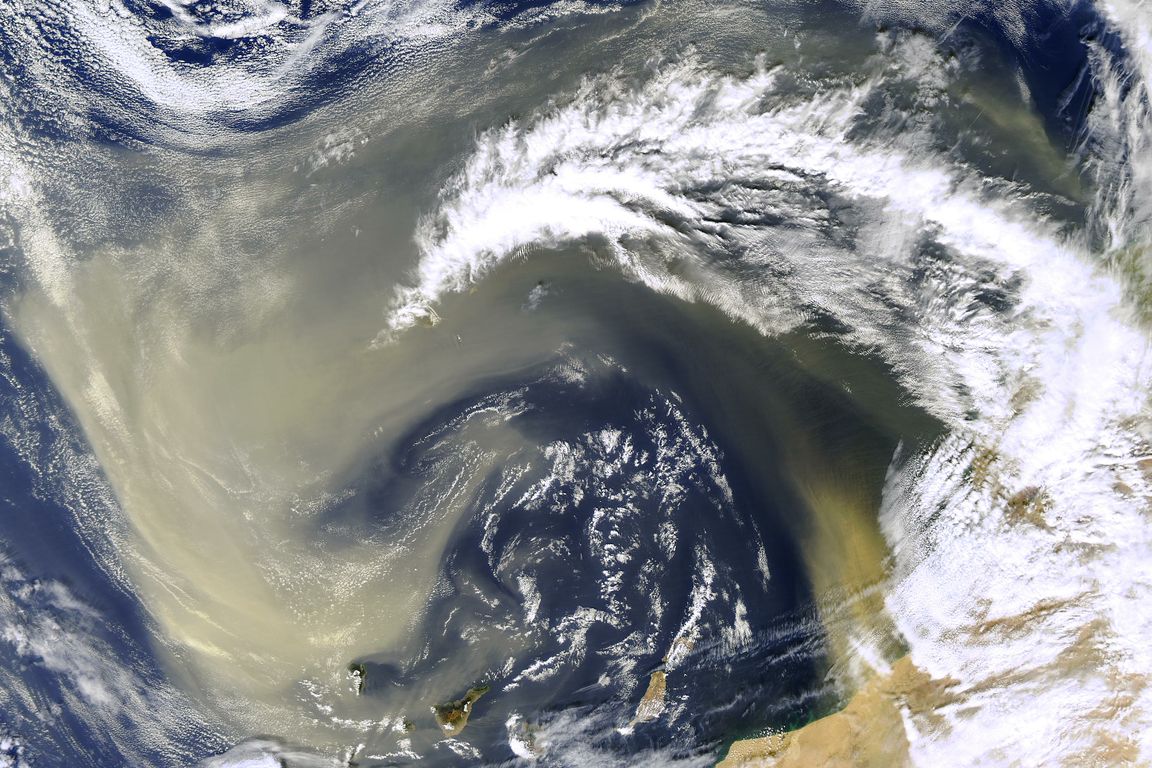Earth is way dustier than we thought. That may be a problem for climate forecasts.
"When we compared our results with what is predicted by current climate models, we found a drastic difference."

Earth's atmosphere, it turns out, is dustier than scientists previously thought.
Dust in the upper atmosphere interacts with clouds, oceans and even radiation, or heat, from the sun. It can affect weather, precipitation and even has an impact on climate change. In a new study, scientists from the University of California Los Angeles (UCLA) found that there is four times as much coarse dust in our planet's atmosphere than has previously be seen in climate models.
There is more than one type of dust. In Earth's atmosphere, there is fine dust that is easily picked up by winds in dry areas, as well as coarser dust made of larger grains often from desert regions_ that can actually contribute to global warming in a similar way to greenhouse gases, according to a statement from UCLA. These large, coarse particles absorb radiation coming in from the sun and leaving the Earth, trapping that radiation on our planet. So, it's important for researchers to understand how much dust, especially course dust, is floating around in the atmosphere.
Related:: The reality of climate change: 10 myths busted
"To properly represent the impact of dust as a whole on the Earth system, climate models must include an accurate treatment of coarse dust in the atmosphere," Adeyemi Adebiyi, the first author on this study and a postdoctoral researcher in UCLA's Department of Atmospheric and Oceanic Sciences, said in the statement.
This team analyzed dozens of dust observations made by aircraft and compared them to how much dust current climate models predict should be in the atmosphere. And, while climate models predict only about 4 million metric tons, the team found that there is closer to 17 metric tons of coarse dust in our atmosphere.
"When we compared our results with what is predicted by current climate models, we found a drastic difference," study co-author Jasper Koka, a UCLA associate professor of atmospheric and oceanic sciences, said in the statement.
Breaking space news, the latest updates on rocket launches, skywatching events and more!
The team also found that dust particles also stay in the air longer than expected. This could mean that, since they're in the atmosphere for longer, they fall back to Earth much farther from the location where they were first picked up by the wind. So dust from a desert could affect ocean ecosystems and even increase how much carbon dioxide oceans absorb, according to the statement.
“Models have been an invaluable tool for scientists,” Adebiyi said. "But when they miss most of the coarse dust in the atmosphere, it underestimates the impact that this type of dust has on critical aspects of life on Earth, from precipitation to cloud cover to ocean ecosystems to global temperature.”
This work was published April 8 in the journal Science Advances.
Follow Chelsea Gohd on Twitter @chelsea_gohd. Follow us on Twitter @Spacedotcom and on Facebook.
OFFER: Save 45% on 'All About Space' 'How it Works' and 'All About History'!
For a limited time, you can take out a digital subscription to any of our best-selling science magazines for just $2.38 per month, or 45% off the standard price for the first three months.

Chelsea “Foxanne” Gohd joined Space.com in 2018 and is now a Senior Writer, writing about everything from climate change to planetary science and human spaceflight in both articles and on-camera in videos. With a degree in Public Health and biological sciences, Chelsea has written and worked for institutions including the American Museum of Natural History, Scientific American, Discover Magazine Blog, Astronomy Magazine and Live Science. When not writing, editing or filming something space-y, Chelsea "Foxanne" Gohd is writing music and performing as Foxanne, even launching a song to space in 2021 with Inspiration4. You can follow her on Twitter @chelsea_gohd and @foxannemusic.

